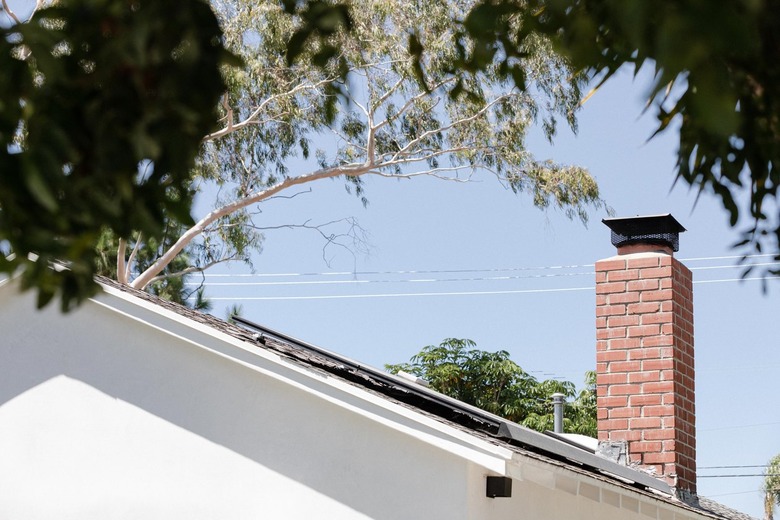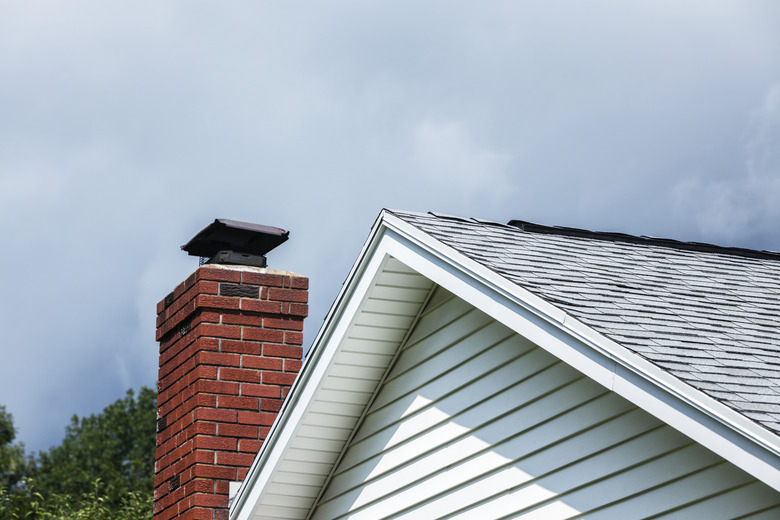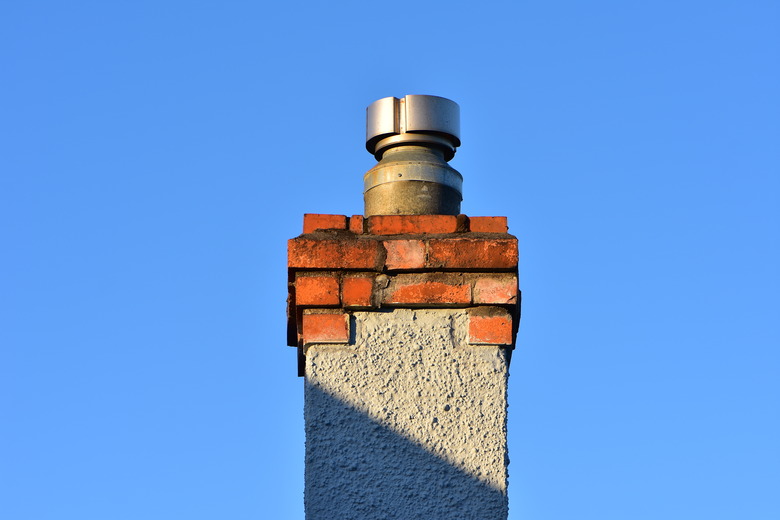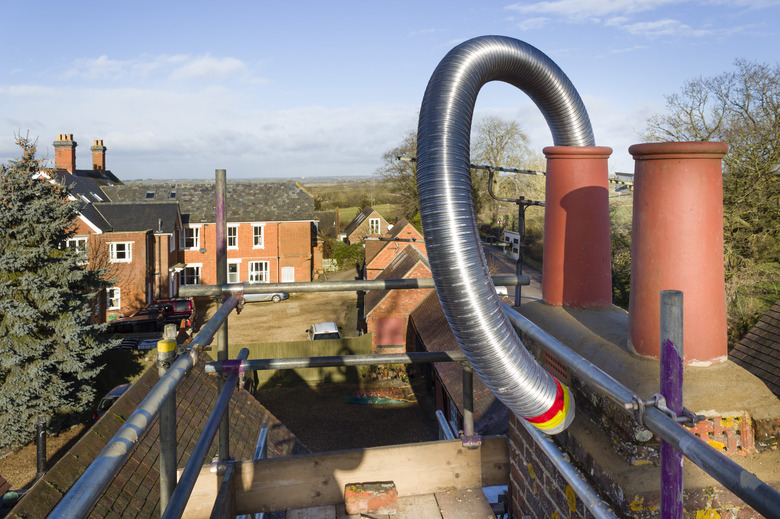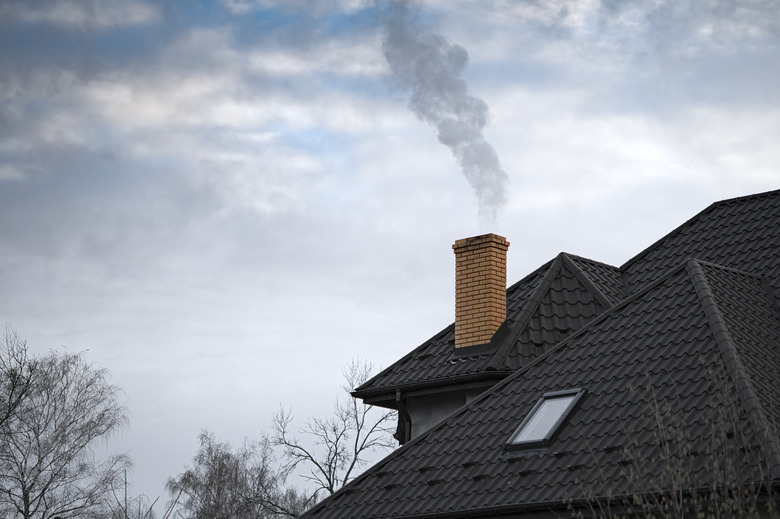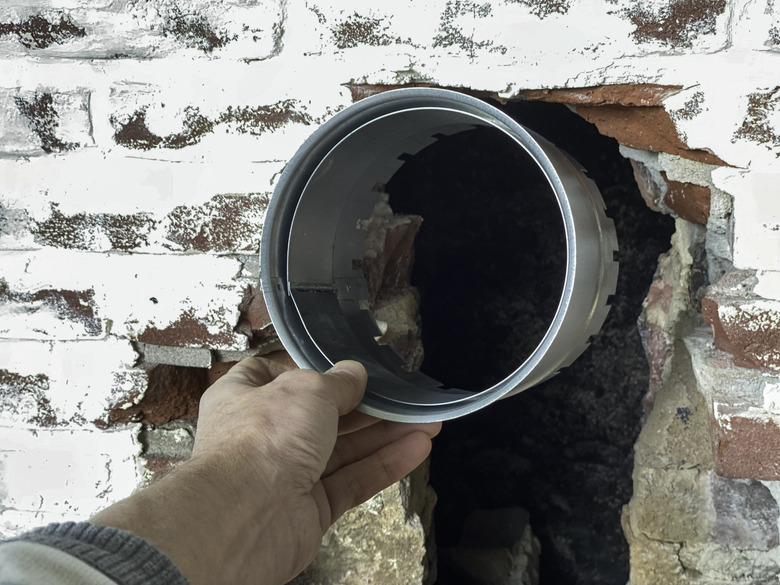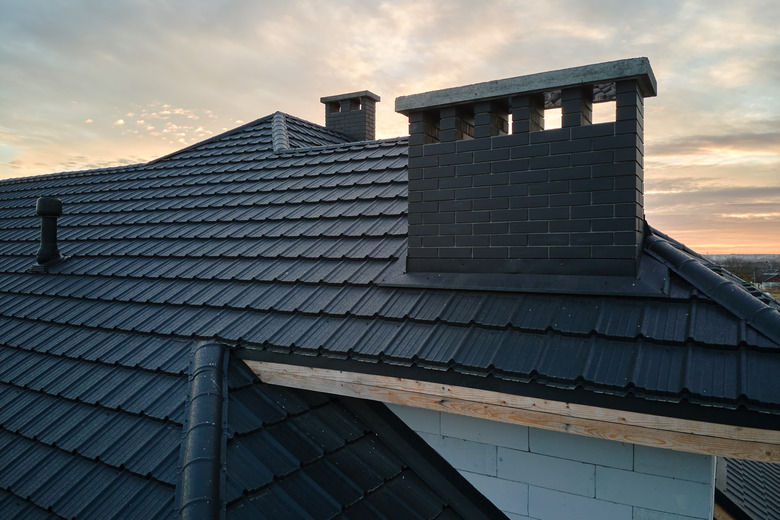What Is A Chimney Liner — And What Does It Do?
We may receive a commission on purchases made from links.
If you're having work done on your chimney and they tell you that you need a new chimney liner, it's natural to wonder (or ask out loud) "What does a chimney vent flue liner do?" After all, aside from the damper you open to let the smoke escape when burning a fire, your masonry chimney does not have any moving parts, so why does it need a fairly expensive upgrade?
In most cases, the inside, or flue, of a masonry chimney is lined with clay tiles. The chimney liner protects the masonry and mortar from the heat generated inside the flue. If there are cracks or other damage to the chimney liner, the intense heat in the flue could affect the masonry of the chimney as well as the house framing, which could cause a chimney fire.
Why Get a New Chimney Liner?
Why Get a New Chimney Liner?
There are a few reasons you may need a new liner. That cozy wood fire you build to warm up on a chilly day sends smoke containing carbon monoxide and other contaminants up the chimney. Even the driest, best-quality logs produce smoke that contains materials that form creosote, a corrosive substance that can damage the flue liner over time. Creosote buildup is hazardous and difficult to fully remove. Sometimes, a new liner is the only fix for the damage.
Adding a new fireplace insert to a traditional open-hearth fireplace may require a new liner — they often have different drafting requirements to operate effectively. Fireplace drafting is the process of the hot air, smoke, and other contaminants produced by the fire rising up the chimney until they are released to the outdoors. Inadequate drafting usually results in a house full of smoke. The size of the flue affects drafting.
Some home improvement projects that may involve different flue size requirements from a large, open fireplace include converting a wood-burning fireplace to a gas fireplace, installing a fireplace insert, and installing a freestanding wood-burning stove that uses the flue in an existing chimney. Appliances like gas- or oil-fired furnaces and boilers and gas-fired water heaters also require a flue to vent noxious fumes. Some chimneys have more than one flue.
You will also need to install a chimney liner if the chimney is unlined. This is an unusual circumstance because all building codes require that chimneys be lined, but it does happen, especially in very old houses.
Metal Chimney Liners
Metal Chimney Liners
Most chimneys are lined with clay tiles, also known as terra cotta tiles. You can use the same material to reline your chimney, but the labor charges will drive up the cost of the project. Contractors will have to remove parts of the masonry chimney in order to remove the old tiles and install the new ones. There are better options available.
Metal chimney liners are the most popular option for relining a chimney flue. They are available in both stainless steel and aluminum. Of the two, stainless steel is the premium option. It will last longer than aluminum, which has a life span of about 15 to 20 years, and some stainless steel flues come with lifetime warranties.
Aluminum is less expensive at about one-fifth the cost of stainless steel, but aluminum flues can only be used with some gas-burning appliances. Aluminum flues are not suitable for any wood-burning application.
Flexible Versus Rigid Chimney Liners
Flexible Versus Rigid Chimney Liners
Metal chimney liners can be either flexible or rigid. If your chimney has any snags, outcroppings, or offsets, it will be easier to install a flexible liner because the contractor can usually maneuver the liner around any obstacles. Rigid liners need a straight shot down for installation.
Flexible liners are usually less expensive than rigid liners. Flexible liners are available in lengths up to 50 feet. Rigid liners are sold in sections that are up to 4 feet long and then riveted together on-site.
As with a clay tile lined flue, a metal flue will still need regular maintenance by an experienced chimney sweep. The Chimney Safety Institute of America recommends annual cleanings. Metal liners should only be cleaned with nylon-bristle brushes, not with wire brushes commonly used to scour clay tile chimney liners.
Buying a Metal Flue Liner
Buying a Metal Flue Liner
It is important to select the right diameter of liner based on how the flue will be used. A liner opening that is too small will restrict the chimney's draft. One that is too large slows down the draft. Fortunately, chimney supply dealers have charts, formulas, and online applications that help you find size of liner that is best for you. Some general guidelines include:
- For a wood-burning insert or wood-burning stove, the manufacturer will specify the size of the flue needed. It usually matches the size of the exhaust opening on the appliance.
- For gas-burning appliances, you will need to match the maximum Btu output to a liner size.
- For an open wood-burning fireplace, measure the area of the fireplace opening (length x width) and the height of the chimney. The dealer or the contractor you hire to install the liner will use that information to specify a liner size.
Most chimneys can be lined with a round chimney liner, but if you need a square or rectangular liner, the dealer can use the information you provide to find the correct size of liner.
You will also need to choose the correct material. Aluminum liners cannot be used on wood-burning appliances nor high-efficiency, gas-burning appliances. The exhaust can get hot enough to melt the aluminum.
Some grades of stainless steel are fine for wood burning but cannot stand up to the corrosive exhaust from gas- or oil-burning appliances. Grade 316 stainless steel can be used for any type of fuel. It has nickel or titanium added to the mix to resist corrosion.
It's recommended that metal flue liners be insulated. The insulation keeps the inside of the flue warmer, which is an aid in creating and maintaining positive draft. And because the flue is hotter, creosote cannot condense as quickly, deposits are kept to a minimum, and the liner stays clean longer.
You can buy insulation kits where you purchase the chimney liner. The kits come with a spray adhesive; the insulating material, which is a layer of insulation formulated for the high temperatures of the flue; and a foil casing.
Installing a Metal Liner
Installing a Metal Liner
Installing a metal chimney liner is a two- or three-person job. You can buy chimney liner kits for about $400 to $800. Having a pro install the liner will cost between $1,500 and $4,000.
The process involves feeding the liner from the top of the chimney down into the firebox. A contractor will attach a pulling cone to the bottom of the liner. The cone protects the edges of the liner, and when you tie a rope to the cone and drop the rope into the chimney, one person can pull from below while another guides the liner into the top of the chimney.
Liners are attached directly to fireplace inserts. So, you will need to remove the damper and probably some of the surrounding brick so that the liner can reach all the way into the fireplace's firebox. The liner is attached to the appliance with clamps.
For a traditional fireplace, the liner terminates above the smoke chamber. The smoke chamber is a wide section of chimney just above the damper. It serves to funnel the exhaust from the fire into the narrow chimney flue. The bottom of the liner is attached to a collar that is cemented into place with cement formulated to resist high temperatures. In this installation, some bricks must be removed to facilitate attaching the liner. Then, the damper has to be reinstalled. You also have the option of replacing a traditional damper with a top-sealing damper that mounts to the top of the chimney, simplifying installation.
At the top of the chimney, the liner is held in place by a metal plate that attaches to the top of the chimney. Once the plate is secured, the rain cap is installed. The cap protects the inside of the chimney from the weather. Most have wire screen sides to keep critters from nesting inside the flue.
Alternatives to Metal Liners
Alternatives to Metal Liners
Aside from clay tiles, there are two other ways to reline a chimney: cast-in-place and ceramic sealant. Both require a contractor with special equipment and technical know-how.
For a cast-in-place liner, the contractor inserts an inflatable rubber tube into the chimney. They then pump mortar around the tube. As the mortar hardens, the tube is removed, leaving a smooth-walled liner. This method has the added advantage of reinforcing the structure of the chimney. Expect to pay about $2,000 to $7,000 for the average chimney.
Ceramic sealant, also known as Thermocrete after the manufacturer of the process, is designed to fill all of the cracks and openings in the old liner. The contractor lowers a spray head down the chimney, where it coats the walls of the flue. The result is a smooth lining that strengthens the chimney. The process can be accomplished with minimum disruption to the home. It costs about $2,000 to $5,000.
